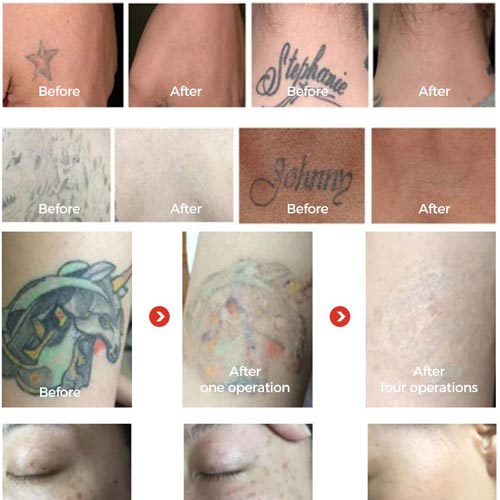Newangie
Newangie Technology Co., Ltd., is a professional beauty machines manufacturer and supplier.
Specializing in the production of high-end beauty machines.
Email:info@newangie.com Whatsapp: +8615227306803
Views: 1 Author: Site Editor Publish Time: 2023-08-28 Origin: Site







In the world of tattoo removal, the choice between Q-Switched and picosecond lasers can shape the effectiveness and client satisfaction of the treatment. This article delves into the intricate realm of these two prominent laser technologies, providing distributors with a comprehensive comparison that unveils their differences, benefits, and ideal applications.
1. Understanding the Basics: Q-Switched and Picosecond Lasers
Q-Switched and picosecond lasers are both designed to break down tattoo pigments, but their approaches differ significantly. Q-Switched lasers emit short, high-energy pulses that generate heat to fragment ink particles. On the other hand, picosecond lasers deliver even shorter pulses, leading to higher peak power and enhanced pigment disruption.
2. Precision vs. Speed: Targeting Tattoo Ink
Distributors should highlight that picosecond lasers excel at targeting ink particles with remarkable precision due to their shorter pulse duration. This results in more effective fragmentation of pigments, leading to faster clearance. Q-Switched lasers are effective too, but their slightly longer pulses mean they generate more heat, making them ideal for darker pigments like black and blue.
3. Advantages of Picosecond Lasers: A New Era in Tattoo Removal
Distributors can emphasize that picosecond lasers bring the advantages of reduced risk of side effects and fewer treatment sessions. With their capacity to handle a broader spectrum of ink colors, including challenging greens and reds, picosecond lasers are gaining prominence as versatile tools for comprehensive tattoo removal.
4. Comfort and Healing: A Step Ahead with Picosecond Lasers
Clients often seek minimal discomfort and rapid healing. Distributors can explain that the shorter pulses of picosecond lasers translate to less heat generation and reduced discomfort during treatments. Additionally, the less intense thermal effect accelerates the healing process, contributing to an overall enhanced client experience.
5. Personalization and Flexibility: Q-Switched Lasers Shine
Q-Switched lasers are by no means obsolete. Distributors should highlight that their slightly longer pulses make them effective for targeting darker pigments, especially in individuals with more extensive tattoos. This makes Q-Switched lasers valuable tools in addressing specific tattoo removal scenarios.
Conclusion: Tailoring Solutions for Every Tattoo Removal Journey
The choice between Q-Switched and picosecond lasers isn't about superiority, but rather about suitability. Distributors, armed with an understanding of the differences and strengths of each technology, can guide practitioners and clients towards the best solution for their specific needs. Whether it's the precision of picosecond lasers or the versatility of Q-Switched lasers, both technologies contribute to successful and satisfying tattoo removal journeys.